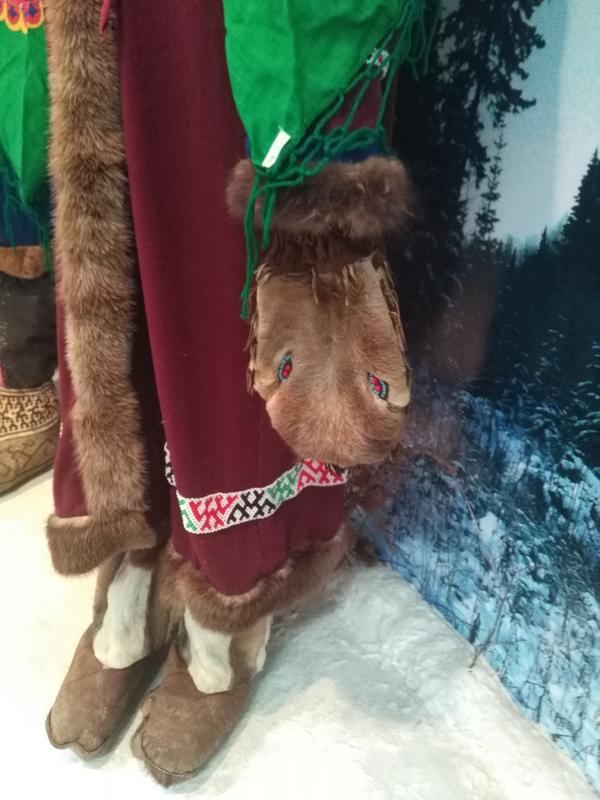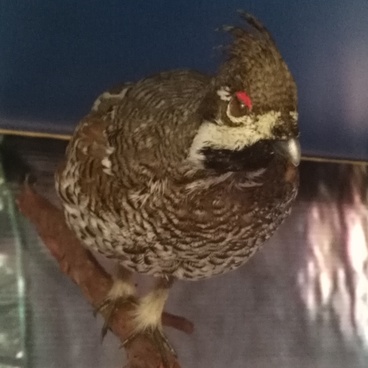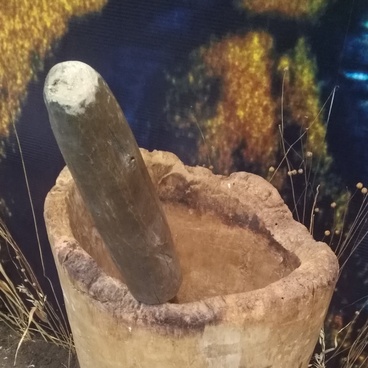Tuchan is a traditional handbag of the Khanty, a small indigenous people who inhabit the north of Western Siberia. In the Khanty language, such bag is called kyrykh.
Since ancient times, every Khanty woman had a kyrykh to keep her needlework accessories. Usually it was sewn from the deer fur shreds, but they could also use leather or fabric. The main parts of the bag were oval and interconnected by a strip of fur and rovduga — suede made of deer leather — along the perimeter. The handbag’s throat had a drawstring. Such handbag could be decorated by applications, pendants, fringes, fur and leather mosaics, ornaments, beads and metal pendants protecting the owner against the forces of dark. Each Khanty woman decorated the bag in her own way, so there were never two alike.
Every woman considered her tuchan to be a very dear thing. It was passed from mother to daughter, or mother sewed a new one for her daughter on the occasion of her wedding. A tuchan was used for storing needles, threads, scissors, beads, various colored fabrics. When choosing brides, hunters always put the sewing craftsmanship above the beauty of the face. By the age of 13-15, each girl was supposed to have several fur handbags. The legends always describe a bride as “a well dressed” and holding “a fur handbag”.
During long winter nights, the Khanty women used to make clothes for the entire family. Not a single piece of leather, fabric or fur was squandered — everything went to a tuchan. A woman also put her amulets in the sewing bag — right next to needles and threads. Even her children’s umbilical cords were stored in a tuchan. Going to a cattle camp or to a forest, a lady of the house always kept her precious handbag near. Even if a handbag owner died, her tuchan stayed with her.
Each Khanty woman used to choose her own ornament to decorate the handbag — it could be moose horns, sable heads or the sun. For the Khanty the sun is a symbol of luck, happiness and prosperity. The sacred ornament was protected against evil forces by pendants made of beads. Special attention was paid to the handbag’s front decoration. Sewn to the upper edge was a thick fringe that covered a drawing. The handbag’s throat string was always tightly drawn, but it lacked a buckle — that is how the handbag was supposed to be handled to bring good luck and happiness to the owner.
Since ancient times, every Khanty woman had a kyrykh to keep her needlework accessories. Usually it was sewn from the deer fur shreds, but they could also use leather or fabric. The main parts of the bag were oval and interconnected by a strip of fur and rovduga — suede made of deer leather — along the perimeter. The handbag’s throat had a drawstring. Such handbag could be decorated by applications, pendants, fringes, fur and leather mosaics, ornaments, beads and metal pendants protecting the owner against the forces of dark. Each Khanty woman decorated the bag in her own way, so there were never two alike.
Every woman considered her tuchan to be a very dear thing. It was passed from mother to daughter, or mother sewed a new one for her daughter on the occasion of her wedding. A tuchan was used for storing needles, threads, scissors, beads, various colored fabrics. When choosing brides, hunters always put the sewing craftsmanship above the beauty of the face. By the age of 13-15, each girl was supposed to have several fur handbags. The legends always describe a bride as “a well dressed” and holding “a fur handbag”.
During long winter nights, the Khanty women used to make clothes for the entire family. Not a single piece of leather, fabric or fur was squandered — everything went to a tuchan. A woman also put her amulets in the sewing bag — right next to needles and threads. Even her children’s umbilical cords were stored in a tuchan. Going to a cattle camp or to a forest, a lady of the house always kept her precious handbag near. Even if a handbag owner died, her tuchan stayed with her.
Each Khanty woman used to choose her own ornament to decorate the handbag — it could be moose horns, sable heads or the sun. For the Khanty the sun is a symbol of luck, happiness and prosperity. The sacred ornament was protected against evil forces by pendants made of beads. Special attention was paid to the handbag’s front decoration. Sewn to the upper edge was a thick fringe that covered a drawing. The handbag’s throat string was always tightly drawn, but it lacked a buckle — that is how the handbag was supposed to be handled to bring good luck and happiness to the owner.



